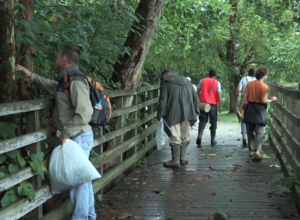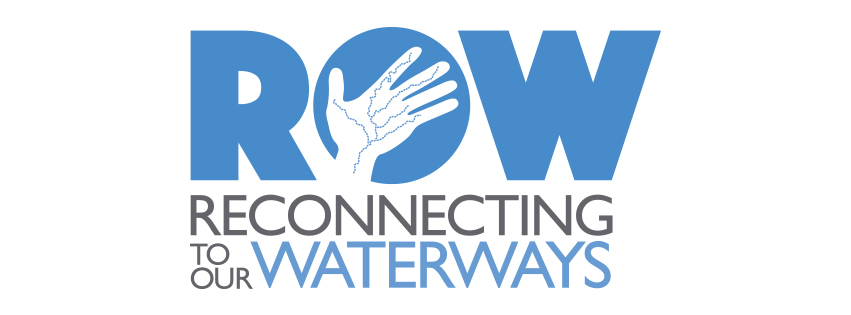Indy Urban Bioblitz
Scientists and volunteers convened in September 2016 for the inaugural Indy Urban BioBlitz, counting nearly 600 species of wild plants and animals along city waterways in just 24 hours.
Close your eyes and picture your backyard or your closest park or stream. How many species of plant and wildlife species do you think live there?
In the fall of 2016, a group of determined scientists, community groups, and volunteers set out to find out through a scavenger hunt-like biological census.
The event, convened by Reconnecting to Our Waterways and co-sponsored by the Indiana Academy of Science, was Indianapolis’ first-ever BioBlitz. National Geographic defines a BioBlitz as “a 24-hour event in which teams of volunteer scientists, families, students, teachers, and other community members work together to find and identify as many species of plants, animals, microbes, fungi, and other organisms as possible.”
On September 16th and 17th, 50 scientists from universities and agencies across Central Indiana and 25 community volunteers split into teams to take an inventory of living things found along the Fall Creek, Pogue’s Run, and Pleasant Run waterways in Indianapolis.
How, exactly, does one do that?
A base camp was set up at Garfield Park Conservatory to provide orientation and supplies to participants. Scientists observed, photographed, and in some cases collected specimens for identification back in a lab.
Nets, waders, and a backpack electrofisher came in handy in identifying fish, including black redhorse and large catfish populating Fall Creek. On land, entomologists used beating sheets and sweep nets helped to loose insects from trees and bushes. Bat detectors recorded echolocation frequencies to detect the presence of bats.
What did the BioBlitz uncover?
58 species of birds, 38 species of fish, and 40 species of spiders are some of the most diverse categories of wildlife observed during the BioBlitz. Bats, butterflies, fungi/mushrooms, and a surprising number of beetles were also found. In total, 593 species were identified. Surprising finds included two species of singing insects, katydids, one at the northern edge of its distribution range and one at the southern edge. Also rainbow darters, fish that are indicators of high water quality
For professionals including botanists, ecologists, and biologists, a BioBlitz offers the opportunity for measuring biodiversity in the area. With plans to repeat the BioBlitz every five to ten years, researchers will be able to observe changes over time.
“When we think of biodiversity, we tend to think of tropical rainforests or far away places. And yet, biodiversity is important everywhere because more diverse communities are more stable and more resilient to potential climate change issues or other disturbances to the habitat.”
“There’s a developing and evolving subdiscipline of ecology that’s interested in urban ecology and trying to understand what kind of restoration efforts will help to make urban habitats better, to preserve and increase biodiversity.”
Rebecca Dolan, Butler University
Education for everyone
During the BioBlitz, amateur naturalists across the city were also encouraged to do their own BioBlitz search throughout the day and log photos of found wildlife on the iNaturalist app.

To involve the community, Reconnecting to our Waterways also hosted two events open to the public:
- A Friday night film screening kicking off BioBlitz at Pleasant Curve Ampitheater, with hands-on family activities
- A recap event at Garfield Park Conservatory on Saturday, where scientists presented preliminary collection results to community members
Above all, Reconnecting to Our Waterways envisions the 2016 BioBlitz as a way to open residents’ eyes to the immense biodiversity within Indianapolis’ borders, and to encourage citizens to enjoy, respect, and protect their waterways as a precious natural resource.
2016 BioBlitz was supported by of the Indiana Academy of Science.
